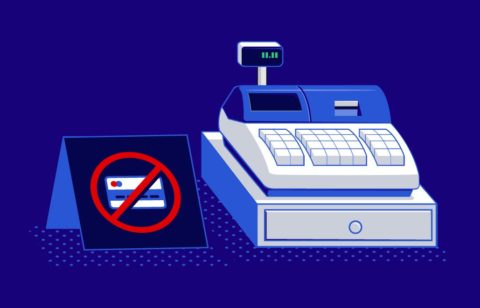The debt snowball method entails paying off your smallest debts first and gradually working your way up to the largest one, as popularized by personal finance guru Dave Ramsey. Touted as much for its psychological efficacy as its capacity to eradicate debt in a timelier fashion, here is how to use the debt snowball method.
The Procedure
1. List all of your debts in order from the lowest balance to the highest, making note of the minimum monthly payment each one requires to avoid a late fee.
2. Calculate the total amount of money you have on hand to pay toward those debts each month.
3. Pay as much as possible on the smallest debt, but first make minimum payments on the rest. Continue this strategy until the smallest debt is paid in full.
4. Now combine the amount you were paying on the smallest debt with the minimum payment you were making on the next lowest balance and keep doing so until it is paid off.
5. Continue paying in this fashion until all debts are paid in full.
6. Use the proceeds that were once used to pay off your debts to start socking money away in an emergency savings account.
How It Works
Let’s say you have two outstanding credit card balances and a car loan. One of the cards has a $3,000 balance and requires a minimum monthly payment of $25. The other one has a $6,000 balance with a minimum payment of $50. The balance on the car loan is $25,000 and its minimum payment is $500.
Now, let’s say you have a total of $3,000 on hand to put toward all three of these obligations every month. Common wisdom would see most people dividing those $3,000 evenly between all three obligations. However, doing so will delay paying them off.
Instead, make the minimum payment on the second credit card and the car loan. Then, put the rest of the cash toward the card with the smallest balance.
Here’s The Math
To keep the calculations simple, let’s set interest charges aside and focus on the principal balances. In this instance, that means you’ll use $500 of the $3,000 to make the car payment and $50 of the $3,000 to make a payment on the second credit card.
This leaves you $2,450 to put toward the smallest balance in the first month.
Repeating the process for the following month pays off the first credit card altogether and leaves $1,900 to put toward the second card balance that month. Combining that with the $50 minimum payment you were making, means you’ll have $1,950 to put toward that balance — which has decreased from $6,000 to $5,950 because you made a $50 payment the month before.
Continuing in the prescribed fashion, you’ll pay off the second credit card approximately three months later. This will then free up the entire $3,000 to put toward the car loan each subsequent month.
Meanwhile, that balance has decreased from $25,000 to $22,500 because you’ve been paying $500 monthly toward it for five months. Continuing the process, the car loan will be paid in full approximately eight months later — and you’ll be debt free.
However, had you divided the $3,000 evenly between the debts each month, you would have needed 25 months to pay off the car loan. Snowballing ends it in just over 12.
In Summary
The psychological advantage of this method is you’ll see results almost immediately. Human beings respond well to immediate gratification, which is exactly what the debt snowball method provides. Instead of three months, that smallest balance is paid off in two. That early success will spur you on to pay off the second one, and so on.





